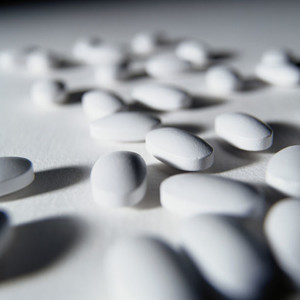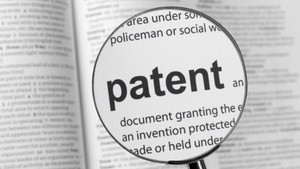Confusion often surrounds terms used in the global field of generics and biosimilars [1].
WHO definitions of biosimilars
Biosimilars/General
|
Posted 09/03/2012
 0
Post your comment
0
Post your comment

The source of some of this confusion is due to authorities in various regions of the world defining terms differently and other instances due to a misunderstanding of the actual nature, characteristics, and method of research and manufacture of biological products.
In an attempt to improve public understanding and avoid confusion, GaBI Online has decided to provide tables of definitions used in different countries or regions. Table 1 shows a glossary of the relevant terms for biosimilars as defined by WHO in their guideline for similar biotherapeutic products.
Table 1: WHO definitions relevant to biosimilars
| Term | WHO Definition |
| Biosimilar | A biotherapeutic product which is similar in terms of quality, safety and efficacy to an already licensed reference biotherapeutic product. |
| Biosimilarity | Absence of a relevant difference in the parameter of interest. |
| Comparability exercise | Head-to-head comparison of a biotherapeutic product with a licensed originator product with the goal to establish similarity in quality, safety, and efficacy. Products should be compared in the same study using the same procedures. |
| Drug product | A pharmaceutical product type that contains a drug substance, generally in association with excipients. |
| Drug substance | The active pharmaceutical ingredient and associated molecules that may be subsequently formulated, with excipients, to produce the drug product. It may be composed of the desired product, product-related substances, and product- and process-related impurities. It may also contain other components such as buffers. |
| Equivalent | Equal or virtually identical in the parameter of interest. Equivalent efficacy of two medicinal products means they have similar (no better and no worse) efficacy and any observed differences are of no clinical relevance. |
| Generic medicine | A generic medicine contains the same active pharmaceutical ingredient as and is bioequivalent to an originator (comparator) medicine. Since generic medicines are identical in the active pharmaceutical substance, dose, strength, route of administration, safety, efficacy, and intended use, they can be substituted for the originator product. |
| Head-to-head comparison | Direct comparison of the properties of the similar biotherapeutic product (SBP) with the reference biotherapeutic product (RBP) in the same study. |
| Immunogenicity | The ability of a substance to trigger an immune response or reaction, e.g. development of specific antibodies, T cell response, allergic or anaphylactic reaction. |
| Impurity | Any component present in the drug substance or drug product that is not the desired product, a product-related substance, or excipient including buffer components. It may be either process- or product-related. |
| Non-inferior | Not clinically inferior to a comparator in the parameter studied. A non-inferiority clinical trial is one which has the primary objective of showing that the response to the investigational product is not clinically inferior to a comparator by a pre-specified margin. |
| Originator product | A medicine which has been licensed by the national regulatory authorities on the basis of a full registration dossier; i.e. the approved indication(s) for use were granted on the basis of full quality, efficacy and safety data. |
| Pharmacovigilance | The science and activities relating to the detection, assessment, understanding and prevention of adverse effects or any other drug-related problems. |
| Reference biotherapeutic product (RBP) | A reference biotherapeutic product is used as the comparator for head-to-head comparability studies with the similar biotherapeutic product in order to show similarity in terms of quality, safety and efficacy. Only an originator product that was licensed on the basis of a full registration dossier can serve as a RBP. It does not refer to measurement standards such as international, pharmacopoeial, or national standards or reference standards. |
| Similarity | Absence of a relevant difference in the parameter of interest. |
| Similar biotherapeutic product (SBP) | A biotherapeutic product which is similar in terms of quality, safety and efficacy to an already licensed reference biotherapeutic product. |
| Well-established biotherapeutic product | Well-established biotherapeutic product is the one that has been marketed for a suitable period of time with a proven quality, efficacy and safety. |
Editor’s comment
It can sometimes be hard to keep up with terminology developments in the pharmaceutical industry, and especially with the new, fast-moving biosimilars area. This is coupled with confusion over different terminology being used in different regions of the world.
Please feel free to share your thoughts via email at editorial@gabionline.net or in the comments section below. What is your opinion on the matter of biosimilars terminology. Do you find it confusing? Have you come across incorrect usage of any of the terms in Table 1?
If you are interested in contributing a research article in a similar area to the GaBI Journal, please send us your submission via science@gabi-journal.net.
Related articles
FDA definitions of generics and biosimilars
EMA definitions of generics and biosimilars
Controversial nomenclature for new biosimilars
EMA proposes more precise definition for biosimilars
A biosimilar by any other name …
Reference
1. GaBI Online - Generics and Biosimilars Initiative. EMA proposes more precise definition for biosimilars [www.gabionline.net]. Mol, Belgium: Pro Pharma Communications International; [cited 2012 Mar 9]. Available from: www.gabionline.net/Biosimilars/Research/EMA-proposes-more-precise-definition-for-biosimilars
Source: WHO
Research
Reaching ESG goals in pharmaceutical development
What is the future for the US biosimilar interchangeability designation
News
FDA approves six denosumab biosimilars
EMA recommends approval for four biosimilars targeting three therapies
Most viewed articles
The best selling biotechnology drugs of 2008: the next biosimilars targets
Global biosimilars guideline development – EGA’s perspective
Related content
Samsung Bioepis wins Pyzchiva case; Regeneron patent rulings threaten foreign biosimilars
Chinese biosimilars go global: growth, partnerships, and challenges
Stelara biosimilars enter US market with 85% discount in 2025
IFPMA publishes position on pharmacy-mediated substitution for biosimilars
Samsung Bioepis wins Pyzchiva case; Regeneron patent rulings threaten foreign biosimilars

Biosimilars/General Posted 30/07/2025
Chinese biosimilars go global: growth, partnerships, and challenges

Biosimilars/General Posted 30/04/2025
IFPMA publishes position on pharmacy-mediated substitution for biosimilars

Biosimilars/General Posted 21/03/2025
The best selling biotechnology drugs of 2008: the next biosimilars targets







Post your comment